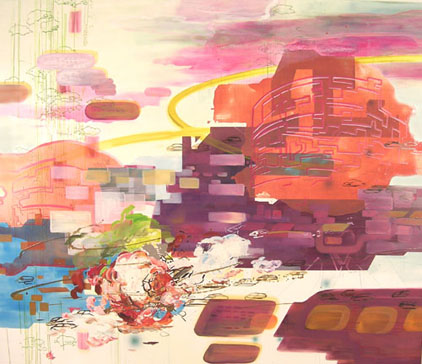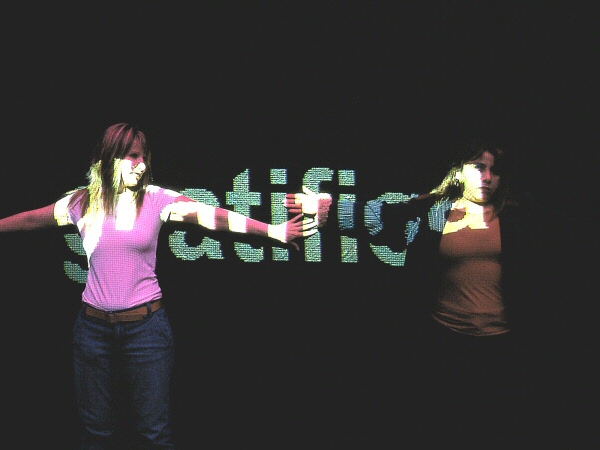Lozano-Hemmer is the undisputed champion of epic-scale, publicly installed interactive art. His inventive electronic interventions have been exhibited in over 30 countries, and in 2007 he was selected to represent Mexico for the country’s first ever participation in the Venice Biennale.

In her second solo exhibition, Kristine Moran sharpens the focus in her sci-fi paintings, zeroing in on the ideas of utopian theorists from the 20th century—Jane Jacobs, Robert Moses, Constant Nieuwenhuys and Buckminster Fuller—to present inner-city landscapes from an imagined alternative present.
Relying heavily on a dose of influence from his Pop art predecessors but injecting it with sensibilities based in hip-hop hype, skater style and graffiti guerilla warfare, Ryan McGinness has pioneered a new territory in the realm of high art.
In his debut solo exhibition, at Toronto’s tiny but edgy and inspiring Le Gallery, di Genova offered ink and ‘cell animation’ paint on mylar drawings that displayed his attention to artists like Twist, Futura, and DALEK.
I caught up with Altmejd for breakfast on the roof of the Armada Hotel in the old Sultanahmet sector of Istanbul the day after the opening of the Biennial. In the shadow of the Blue Mosque with a panorama view of the Bosphorus we spoke about energy generating werewolf heads, studio visits with Matthew Barney, the relationship between art and commerce, and what it means to be a French Canadian artist working in New York City.
It was already dark and all I could see to match the aggressive growl were two headlights speeding towards me at a terrifying clip, now less than a block away. As I leaped onto the curb the 1968 red Cobra flew past, the driver’s blur of blond hair swishing in the wind.
The sublime torment of Stipl’s demented figures resembles nothing so much as the stoic, hardened, drunken peasants trapped in Hieronymous Bosch’s purgatories. And like the prime-time reality-television programs we all deny watching, these grotesque miniatures at once repel and attract our gaze, making us at once slightly nauseous yet terribly compelled to keep looking.
The inventive and delightfully serendipitous drawings, sculptures and dolls in this show derive from a collaborative practice by the eight members of the group: Michael Dumontier, Hollie Dzama, Marcel Dzama, Neil Farber, Drue Langlois, Myles Langlois, Jonathan Pylypchuk and Adrian Williams.
It’s a Tuesday night in Lower Manhattan. Race night. I’m at Tom Sachs’s production facility on Hester Street, three blocks from his studio, two blocks from his home. Chinatown. This giant factory is on the third floor of an ancient building that once housed the New York City Police Department’s mounted division.
Since Pope Gregory the Great first posted the seven deadly sins on the Christian internet in the sixth century, they have been creative fodder for an incredibly diverse group of artists.
